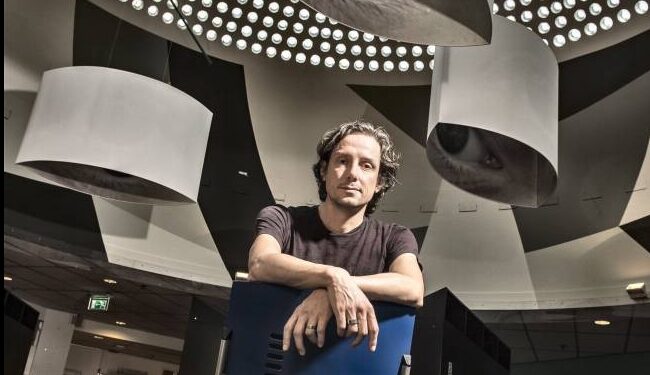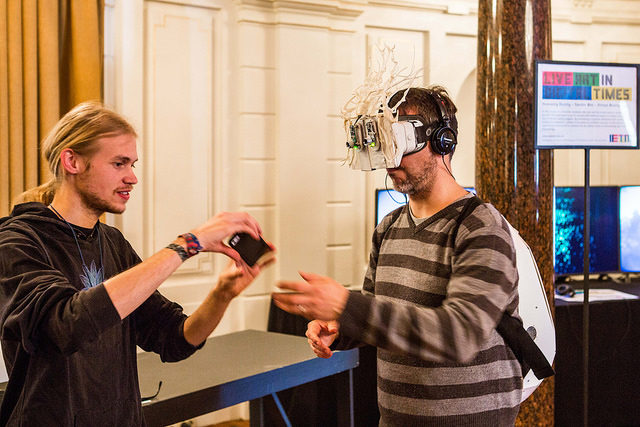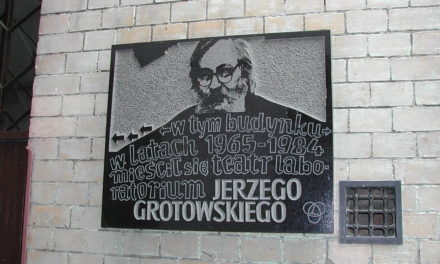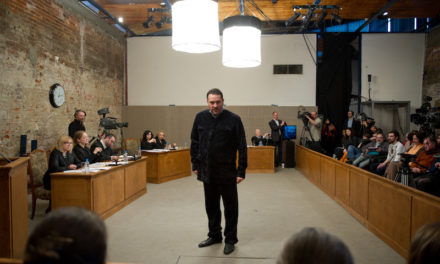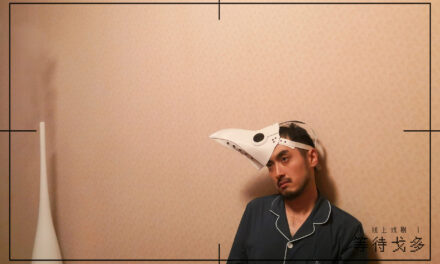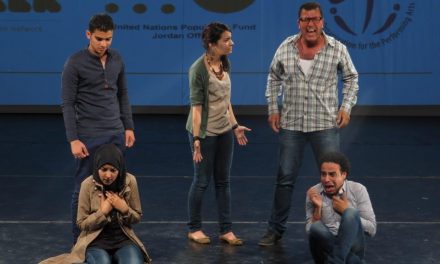Evert Hoogendoorn is a strategist and game designer at IJsfontein Interactive Media. He also has a background in theatre and acting, has been part of the game industry for over fifteen years and started the Design for Virtual Theatre & Games program that later became part of the School of Theatre under the name of Interactive Performance Design program. He speaks with us about the reticence of some directors to use digital devices in the theater.
At the IETM meeting in Amsterdam 2016, you asked the audience to put forward three verbs which define contemporary theatre for them. What would be your three verbs?
I think the most important issue in theatre is that it is live: and what I see in most theaters is that the quality of liveness is kept implicit. Everybody acknowledges that it is important, but the only consequence which you see is that the audience should be really quiet, compared to other forms of live art. The audience has a much more active participatory role. But we don’t design the experience, which would give room for the creative force that is potentially there.
Do you think Shakespeare was an “experience designer”?
I think he was. If you look at Shakespearean theatre, there is a much more differentiated audience experience. It was possible to sit on stage, or on the balcony, or to stand on the ground floor. These people have completely different experiences, and it was very common to be very vocal as an audience. They were really expressing what they felt for a character or dialogue or events in the plot. And that was possible: on the ground, you could be vocal, if you were very high up in the balcony it meant you were throwing something, if you were on the stage you were supposed to do a lot less. These rules for different audiences were connected to social status and money, but nonetheless, the place was designed to address all these kind of behaviors. In every industry in the world, people are increasingly able to participate in media, but it’s not the same case for theatre.
What brought about this change over the past 100 years?
I think all media is increasingly a ‘sit-back’ media. Reading books was something you would do out loud, but now you do it in private and less actively. Theatre went through the same process with the onset of the movie industry. Since then, all media has shifted focus to more relaxed audiences. Sit back and relax: TV is the apotheosis of passive, lazy audiences. All media has followed the same path, but currently, we’re seeing different forms of media become more interactive: 3D movies are getting popular where people are more actively engaging with the content. I see this development happening in theatre too, but in theatre it is much more of a niche development.
What do you mean by niche development?
It is very small scale. If you start counting seats there are a lot of theatres with a lot of seats for people who want to go for a “4thwall” performance. It is harder to be interactive with more than 10 people, because it’s more complicated, than it would be if the setting were more intimate. But if you just look at how many producers are, exploring more active audience participation, it’s very few.
Do you have this class in Utrecht?
Yes, we do. For example, it’s possible to do a 2-week workshop on interactive script-writing but we don’t have a 4-year program. That’s because, on the one hand, the teachers and the school are inexperienced in this field, and, on the other, this type of theater is less in demand. If you look at the bigger picture of media development and scriptwriting more generally, this is the way things are heading—only theater isn’t heading in that direction.
https://www.youtube.com/watch?v=yt5K8IrOSYc
What is unique to your university? You are teaching interactive performance design.
The main added value is that we have a department coming from both the theatre and game industries. What I see is that we are training theatre producers in technical stage design and scriptwriting. We aren’t training actors. They look at the profession as a design profession: they look at the techniques to really engage the audience. For them sitting in a chair and listening is an option, but it is not a given.
Does it mean that in 20-30 years, the normal theatre crew is going to change into less actors and more designers?
Not 30 years even; maybe more like 5 years. I don’t think you need less actors, but you need more designers. I think the role of the director and of the stage designer will be changed drastically. There is room for a lot more innovative stage design in theatre. The writing is going to change dramatically. Writing in theatre is something that is done by an individual. If you look at television writing, it is done in teams; the director is the lead in the team. Some of the writers in Utrecht are trained to stop looking at their story as a time-based sequence of events, but more as a spatial way of ordering the scenes. You come up with words like “experience designer,” “user experience designer,” or ‘imageneer’ like Disney is using because the principle storytellers of Disney are not the writers. They combine the roles of writing for animation and writing for “experience.” And how to make people to wait in line for hours.
You think this is something that is ruining the expression of the artists? It will be available and cheap…
Yes and that is exactly why I want theatre people to be involved. There are people who have the actual knowledge of how to tell an interesting, multi-layered meaningful story. If they don’t get involved, we are screwed. If there are so many very good talented artists but also craftsmen, and if they don’t get involved in a couple of years, we are staffed with only mocking people and gadget freaks for our stories.
You mean there is a danger that these people are going to make movies for theatre?
Yes, that would be like putting Shakespeare in an amusement park and saying let’s use the human body for pornography instead of aesthetics. There will be a big gap, and the new space that is created for the audience to see a good story has a tremendous artistic potential to attract new audiences.
I would urge theatre-makers to experiment with time with the same attention to detail like in Dear Esther. Because if you do it right, you could make a wonderful aesthetic contribution, but if you just decide to make a story from A to Z it will just be boring. The makers should see that as an opportunity, as a challenge, and I think if you do (like Blast Theory and so many other), they will be on a path to explore new possibilities, regardless if they make something worthwhile or not. If we don’t make an effort to step on this wagon, then it could be that this will be more and more a niche. And we have seen it in game design where the X-box was the big industry, but there was an independent small change: The smartphone came and now X-box is the niche. It might happen the same in theatre development. Suddenly our mainstream now in theatre will be niche, and there won’t be anything after to take its place, and the new mainstream will be the Disney world.
Do you thing that this gap “is happening”?
Yes and it is getting bigger. In France every medium town has a project live session on the city hall and hundreds of people are watching it. The audience gets something spectacular but not the story. Or if you look at 3D productions like Oculus Rift’s, for example. In Amsterdam there is a 3D cinema now, people are paying a lot for a 20-minute experience and what do they get? A rollercoaster. I was disappointed with IETM members to see how few theatre professionals were unaware of the Oculus Rift: 20% have heard of it, and maybe 3% of them have actually tried one. That is a potentially huge platform which is ignored and big entertainment companies are investing millions. I think they know what they’re doing.
You said it is not okay that gamification is entering theatre but now I see what you mean. You think that theatre has been gamified, but is just not the right term to use?
I have a very ambiguous relation with the word “gamification”. Because gamification is kind of held hostage by marketing. It is about what you constantly do to try and design the audience’s behavior. I think that for theatre-makers, because they are so specialized in live interaction, it has a huge potential, but I wouldn’t call it gamification. I don’t want to win, if I go to theatre, I don’t want to participate in the “who’s the best audiences member” game. That’s what I think of when hear “gamification.” But I do think that things that motivate me are naturally beneficial for my involvement in the story. And that also means that we really look at thinking about theatre and performance from the point of view of how much interaction we want. The theatre doesn’t stop when people leave the room and go to the bar, but it goes on weeks later when you tell others about your experience. This is the same thing with the museum. It used to be how a museum would think: my museum starts at the cash register and ends at the show. But after that, I can tell my story. You have to tell stories beforehand too, because people don’t know your story; they won’t come to the cash desk if they haven’t heard your story.
Can we see it as the core activity?
One of the reasons to have people come to a performance should be to try and get them to come back to the another one. If you start to look at the retail market you see how much companies are investing in first-time user experiences to have try and bring them back later, as you start to make money only after the third visit. That is a totally different concept on how to design your user journey, then we have in the theatre. We have trouble with getting people into the theatre. Even if they loved the show, when you ask them “have you seen something else from that group?” they usually answer “no.” This makes it hard for freelance theatres to build up an audience.
You mentioned performance spaces became more important than time, why?
Stories are different now. If you read a book you read from page 7 to 450. If you watch a movie you start at the beginning. Most people don’t watch movies from beginning to end. We learned from media to fill the gaps, we are really good at gathering information from all different kinds of spaces: Facebook, news, telephone, friends, and you make one story out of all that information. Instead of creating the story that is effectively a series of events, a chain in a timeline, we are constantly creating our own stories, that are not chains in a timeline, but a chain of spaces that I visit. You choose the form of the narrative once you know the story that you want to tell. Also in games, like Dear Esther, the designers purposefully let nothing happen, cause it forces you to reflect on events where nothing happens. It doesn’t necessarily have time-based sequences, and it doesn’t necessarily have a cause. It is not like “A causes B.” Instead, we saw B, we saw C, and so we presume that A must have happened. People are constantly formulating different kinds of stories. We are really good at imagining what A would be like, and when someone starts to recount the narrative it becomes boring. But you can design the space: you can decide where to go first. And as soon as you make that possible, space takes the place of time.
This interview was supported by IETM and originally posted on Zip-Scene.com. Reposted with permission. Read the original article.
This post was written by the author in their personal capacity.The opinions expressed in this article are the author’s own and do not reflect the view of The Theatre Times, their staff or collaborators.
This post was written by Ágnes Bakk.
The views expressed here belong to the author and do not necessarily reflect our views and opinions.

